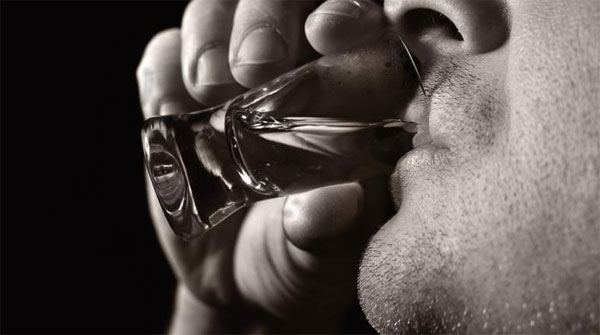The process of destroying 5 body functions of alcohol
Proper use, alcohol can benefit the body. When drinking becomes 'disease', the alcoholic effects can be disastrous for human health.
According to the US National Institute of Alcohol Abuse and Alcoholism, immediate effects of alcohol including increased blood alcohol levels can occur 10 minutes after the first sip of alcohol. However, these effects are small compared to the long-term effects of alcohol on the body. Researchers have shown that alcohol use can lead to many types of cancer, including: mouth, esophagus, throat, liver and breast. It can cause serious damage to most major organs of the body.
1. Tim
Recent studies have shown that antioxidants found in a glass of red wine may reduce the risk of cardiovascular disease, but what happens when a cup becomes a bottle. Over time, excessive use of alcohol weakens the heart muscle, resulting in abnormal blood circulation. Alcoholics and indiscriminate drinkers often suffer from a disease called cardiomyopathy . People diagnosed with alcoholic cardiomyopathy have the ability to have shortness of breath, arrhythmia (irregular heartbeat), fatigue, enlarged liver and prolonged cough. Alcohol may also increase the risk of heart attack, stroke and high blood pressure.

Photo: medicaldaily
2. The brain
Except for the initial excitement, alcohol can be harmful to the brain. By slowing the reception of information between neurotransmitters, ethanol in alcoholic beverages can also damage many areas of the brain. Prolonged damage to the neurotransmitters of the brain can cause behavioral and mood changes such as depression, anxiety, memory loss and seizures.
Alcoholism associated with poor nutrition can also cause 'wet brain' Wernicke-Korsakoff syndrome. People with alcoholism with wet brain syndrome suffer from a form of depression characterized by memory loss, confusion, hallucinations, inability to coordinate muscles and the inability to form new memories.
3. Liver
The liver plays a role in digesting food, absorbing nutrients, controlling infections and eliminating toxins from the body. Up to 2 million Americans suffer from liver diseases due to excessive alcohol use. Cirrhosis ranks 12th in cause of death in the US in 2009. Of the more than 31,000 deaths reported this year, 48.2% are thought to be related to alcohol. One in three people who have a liver transplant in the US is a consequence of alcohol-related liver disease.
4. Pancreas
Like the brain, using a lot of alcohol can disrupt the pancreas causing excretion of internal enzymes instead of sending them to the small intestine. The accumulation of enzymes in the pancreas will eventually cause pancreatitis, which may appear suddenly (acute pancreatitis) with symptoms such as abdominal pain, nausea, vomiting, increased heart rate, and diarrhea. flowing and fever, or chronic pancreatitis will gradually destroy the pancreas, leading to diabetes and even death.
5. Kidney
The effects of alcohol on the liver may also spread quickly to the kidneys. Due to the diuretic effect, alcohol has increased the amount of urine the body releases, making it impossible for the kidneys to regulate body fluids including the distribution of sodium, zinc and chloride ions. This can cause electrolyte imbalance. Excessive drinking can also lead to hypertension, the second leading cause of kidney failure.
- How is methanol - an extremely toxic substance in alcohol destroying the body?
- Decoding vomiting after drinking alcohol
- Signs of liver cancer
- Although drinking different types, there is only one smell of alcohol and this is the reason
- Check the harmful effects of alcohol on each part of the body
- How to use alcohol stove for safety?
- In fact, drinking alcohol warms people
- Explain why there are high alcoholic people, who have
- New benefits of alcohol withdrawal in a month
- Alcohol antidote: can alcohol be solved?
- New harm when drinking alcohol: Mutagenic DNA
- How does the human body change after death?
 Green tea cleans teeth better than mouthwash?
Green tea cleans teeth better than mouthwash? Death kiss: This is why you should not let anyone kiss your baby's lips
Death kiss: This is why you should not let anyone kiss your baby's lips What is salmonellosis?
What is salmonellosis? Caution should be exercised when using aloe vera through eating and drinking
Caution should be exercised when using aloe vera through eating and drinking